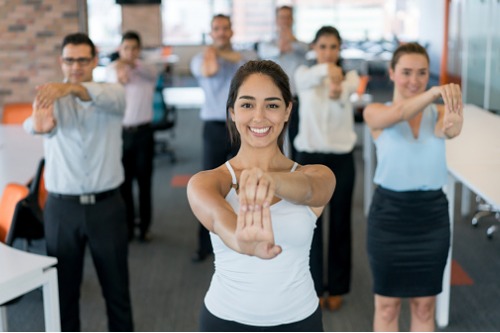
Employers must ensure the health of their staff isn’t compromised in the post-Christmas return to the office

If you have a job that involves a lot of sitting, there are several ways you can lower your risk of early death, according to Keith Diaz, PhD, assistant professor of behavioural medicine at Columbia University Vagelos College of Physicians and Surgeons.
In particular, it involves moving more often, for as long as you want and as your ability allows -- whether that means taking an hour-long high-intensity spin class or choosing lower-intensity activities, like walking.
Diaz’s comments come as a new study of around 8,000 middle-aged and older adults found that swapping a half-hour of sitting around with physical activity of any intensity or duration cut the risk of early death by as much as 35%.
The findings highlight the importance of movement -- regardless of its intensity or amount of time spent moving -- for better health.
Diaz added that the findings “underscore an important public health message that physical activity of any intensity provides health benefits”.
Moreover, employers should encourage physical activity and ensure the health of their staff isn’t compromised in the post-Christmas return to the office, according to the Australian Physiotherapy Association (APA).
Even though coming back to the office from extended time off can be a struggle, it’s important – for both physical and mental wellbeing – not to revert to long, uninterrupted periods of sitting.
In addition to potentially causing musculoskeletal problems such as neck, shoulder and lower back pain, sedentary behaviour has also been associated with an increased risk of developing Type 2 diabetes, heart disease, obesity and certain types of cancers.
According to Dave Hall, Chair of the APA Occupational Health, building movement into your working day can be a big step towards increased health and productivity.
Hall offers the following advice for maintaining movement in the workplace:
1. The simple act of just standing up every half hour and having a five second stretch can make an immense difference
2. Take phone calls standing. In fact, use phone calls as a trigger to stand and talk
3. Drink plenty of water. Better hydration means more frequent need to go to the bathroom, as well as the need to fill up the water glass (i.e. plenty of short burst walking).
4. Build a coffee / tea break routine into your day, e.g. coffee 10am, tea at 3pm. The body likes routine and after a while you will crave these breaks, which means they in turn will become an integral part of your work day.
5. Walk over to talk to a colleague rather than sending an email.
6. Form a group to conduct some general exercise; from a yoga class to a quick 15-minute walk. Anything is better than nothing, especially when you’re just starting out.
7. Move the bin and printer away from work station areas so you need to walk to them when required.
8. Make your meetings standing or walking ones. Some organisations resist the idea of walking meetings because they need whiteboards or audio-visual aids.
However, there are often aspects of meetings where walking, and a change of scenery, will be helpful - and possibly even more beneficial - to the meeting outcome.
If notetaking is required, allocate this to someone with a small mobile device or tablet which is easily carried, meaning no one needs to be anchored to the spot just to take minutes.
9. Walk to and from work or the train / bus stop, or park further away.
10. Embark on a team building event such as an obstacle race or ‘steps-per-day’ challenge.
11. If you’re an employer, create an office geared towards movement. Activity-based work spaces promote versatility, movement and collaboration in the work place.
They may include meeting pods where people stand, more collaborative meeting areas, flexible work stations that permit more standing and movement, for example.